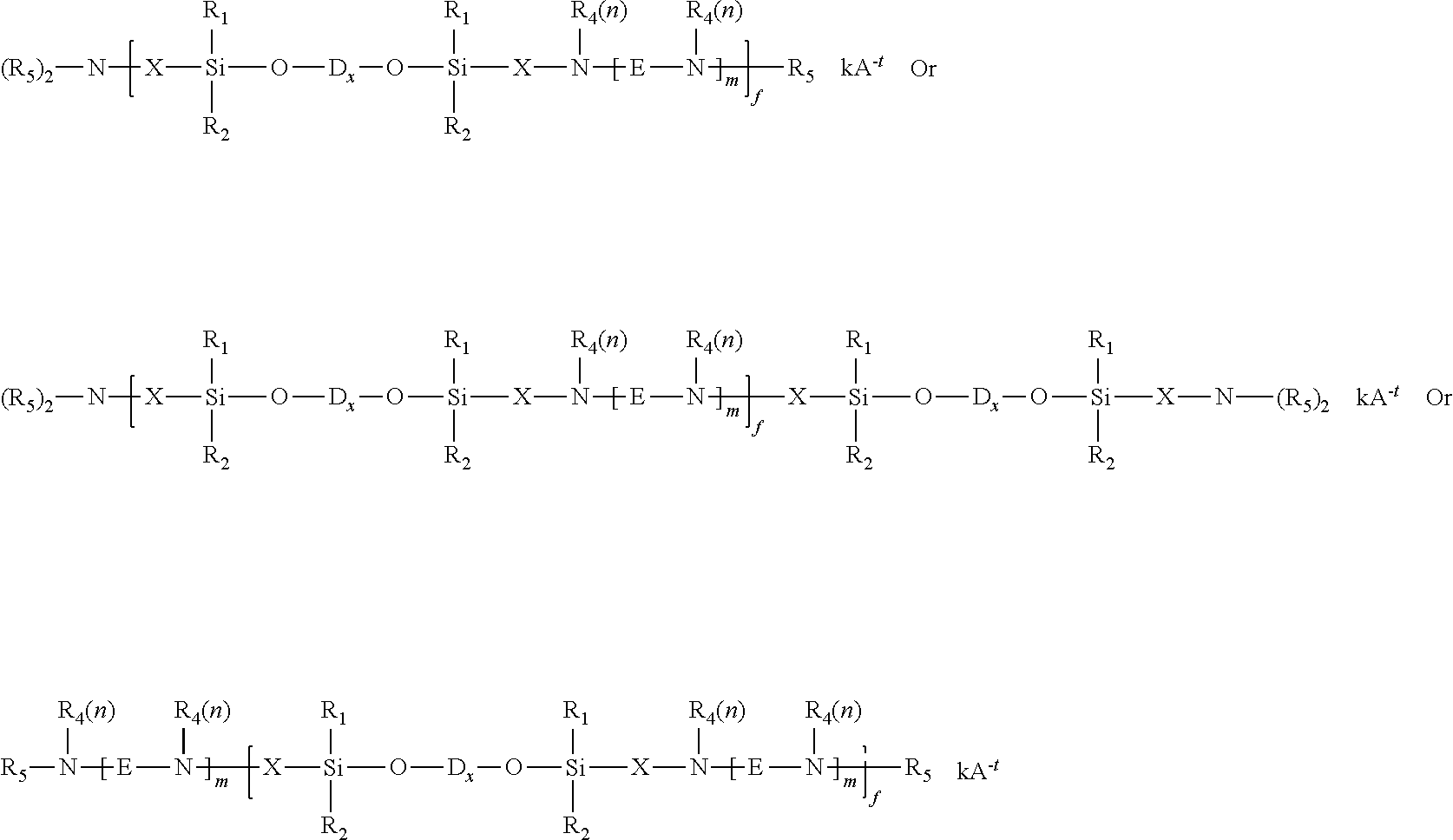Blocky Cationic Organopolysiloxane
- Summary
- Abstract
- Description
- Claims
- Application Information
AI Technical Summary
Benefits of technology
Problems solved by technology
Method used
Image
Examples
examples
[0107]The following examples further describe and demonstrate exemplary embodiments within the scope of the present invention. The examples are given solely for the purpose of illustration and are not to be construed as limitations of the present invention since many variations thereof are possible without departing from the spirit and scope of the invention. Ingredients are identified by chemical name, or otherwise defined below.
[0108]To a clean vessel is added the quantity of silicones (available from Gelest Co., Morrisville, Pa.) shown in Table 1 and an amount of isopropanol (available from Sigma-Aldrich, Milwaukee, Wis.) equal to the amount of silicone is added. This is mixed by stirring the sample at 30 rpm for one hour and then the quantity of activated dichloride (available from Sigma-Aldrich, Milwaukee, Wis.) is added along with the amount of dihalide indicated for the 1st addition and this is mixed by stirring at 30 rpm for 12 hours at 50° C. After twelve hours, the quantit...
PUM
| Property | Measurement | Unit |
|---|---|---|
| Fraction | aaaaa | aaaaa |
| Equivalent per mass | aaaaa | aaaaa |
| Equivalent per mass | aaaaa | aaaaa |
Abstract
Description
Claims
Application Information
 Login to View More
Login to View More - R&D
- Intellectual Property
- Life Sciences
- Materials
- Tech Scout
- Unparalleled Data Quality
- Higher Quality Content
- 60% Fewer Hallucinations
Browse by: Latest US Patents, China's latest patents, Technical Efficacy Thesaurus, Application Domain, Technology Topic, Popular Technical Reports.
© 2025 PatSnap. All rights reserved.Legal|Privacy policy|Modern Slavery Act Transparency Statement|Sitemap|About US| Contact US: help@patsnap.com



